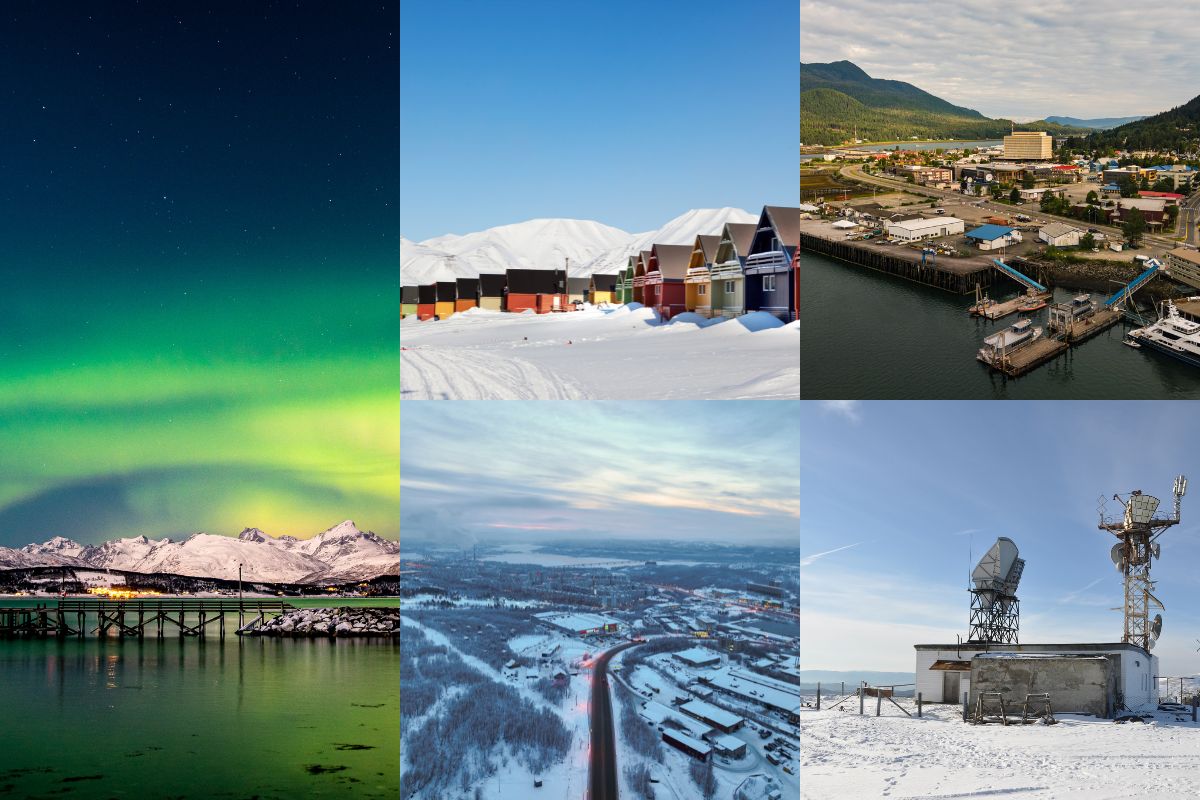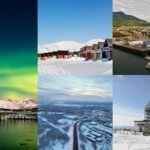I get it; I know what you’re thinking. Places where the sun doesn’t rise? That one has to be made up, right? Wrong. Such places do exist in this world, where people wake up, eat breakfast, go to work, and return home — all under full cover of darkness. For months. Sounds mental, doesn’t it? But it gets properly interesting in a minute, so stick with me.
What’s Actually Going On Here?
OK, a science lesson without the boring bits. Earth’s wonky. Well, it tilts. Roughly 23.5 degrees, that’s what. So when winter comes, the top and bottom bits of our planet are pointed away from the sun entirely. The closer you get to the poles, the worse it gets. Or better, depending on how you see it. Some people call it polar night. Others just call it “that time when we don’t see the sun for ages.” Either way, it’s properly dark.
Five Spots That Go Months Without Sunrise
Longyearbyen, Norway
It holds the prize for being the most northerly place you can live permanently. Some 2,400 people have decided that Svalbard, a tiny Norwegian archipelago, is home. On October 27, the sun sets, and it won’t return until March. That’s 132 days. Four and a bit months. You’d think everyone would be miserable now, right? Nope. They’ve also got festivals, parties, and the northern lights doing their thing overhead.
The natives have learnt that fighting the dark is futile. So they’ve befriended it instead. There are actual shops and cafés; there’s even a university campus. People are not just getting by but are living real lives. They are simply in need of a lot more lightbulbs and vitamin D tablets than the rest of us.
Utqiagvik, Alaska
Used to be called Barrow. It is America’s northernmost city, and the sun packed its bags on 18 November last year and it won’t rise until 22nd Jan. That’s 64 days of never seeing a single sunrise. The Iñupiat have been doing this for a few thousand years; they’ve got it figured out. Modern residents have had to adapt, though. Schools still open. Businesses still run. Life goes on. It’s just a matter of everyone doing everything under artificial light.
Kids still play outside during lunch breaks, except it’s dark. People still go jogging, except it’s dark. You get used to checking your watch instead of looking at the sky to figure out what time it is.
Tromsø, Norway
Someone had the mad idea that we should call this “the Paris of the North,” which feels a bit like overreaching, but each to his own. It’s a real city, having 70,000 people, universities, museums, and brilliant nightlife. The sun disappears from November through January. Here’s the thing, though. It’s not completely pitch black as if you’re stuck in a closet. There is this strange twilight thing that happens around midday.
It feels like a long sunset that goes on for weeks. Mind you, there’s no real sun yet, but you can see where you’re going without a torch. The northern lights show up regularly, and honestly, constant darkness makes them look even better. The locals seem suspiciously happy about the whole arrangement.
Dikson, Russia
This one’s properly remote. A Siberian backwater, hardly anyone lives there today. And then the sun seems to disappear completely from early December to January. Not even a hint of it. The cold here is not “wear a jumper” cold. It’s cold enough that you are questioning every life decision. Combined with the darkness, it’s no wonder the population’s shrunk over the years. Only the really tough ones stick around.
Research Stations Near the North Pole
Researchers at the real North Pole bear the brunt of all that. The sun goes down in mid-September and doesn’t come back up until mid-March. That’s 179 days. Nearly half the year. These scientists are studying climate change, tracking wildlife, and monitoring the aurora. All while living in something that’s basically a very cold, very dark laboratory. It takes a special kind of person to sign up for that, doesn’t it?
But Why Would Anyone Choose This?
Fair question. And, it turns out, there’s something about mutual pain that unites us. In these 5 places where the sun never rises, the unity of the community is closer than it is anywhere else. Everyone’s in the same boat, so everybody takes care of one another. Public spaces get special lighting to help with the mood. Cafés become second homes. People actually talk to their neighbours. Revolutionary concept, that.
And the best part: these same places experience the midnight sun during summer! The sun just… stays up. For months. So it’s not all bad. You have your darkness in winter and your 24-hour daylight in summer. Balances out, supposedly.
The Flip Side of the Coin
It’s worth mentioning that whilst these places experience polar night, they also get the opposite situation in summer. In which country sun never set? Same ones, just a different time of year.
Norway, parts of Alaska, Russia, and Greenland all get their turn with both extremes. Some places become 24-hour sunlight country destinations during peak summer. Tourists flock to see the midnight sun and take photos at 2 a.m. with the sun still blazing. It’s weird and wonderful in equal measure.
What About That “No Sunlight” Thing?
A place where there is no sunlight sounds absolutely grim when you say it out loud. But people manage. Humans are weird like that—we adapt to almost anything if we have to. Or want to, in some cases. Vitamin D supplements have become as routine as morning coffee. Light therapy boxes appear in many homes. People do creative things with their curtains during the summer when they need to sleep and the sun doesn’t want to cooperate.
Living There Isn’t What You’d Expect
We mostly think of them as desolate places, lonely spots where everybody is just waiting for the sun to rise once more. Reality’s different. There’s joy there. Proper community spirit. Folks embracing the dark rather than merely braving it. Children grow up thinking this is normal. They have “sun parties” when it finally returns. They learn to read the subtle changes in twilight that most of us would never notice. Their sense of time works differently. Adults who move there often say the first winter’s brutal. The second one’s easier. By the third, they’re wondering why everyone else needs so much sunlight anyway.
So What’s the Point of All This?
Honestly? It’s just fascinating that humans can make anywhere work. These are not research stations with people counting down the days.” They’re real towns and cities where people have created lives, raised children, and opened businesses.
The 5 places where the sun never rises prove that sunshine isn’t actually required for happiness. Community is. Purpose is. Having something to get up for in the morning—even if morning looks exactly like midnight. Next time you’re complaining about a grey day, remember there are people who’d be chuffed to bits with just a grey day. They’re making do with no day at all, and they’re doing alright. Makes you think, doesn’t it?








